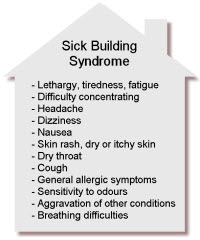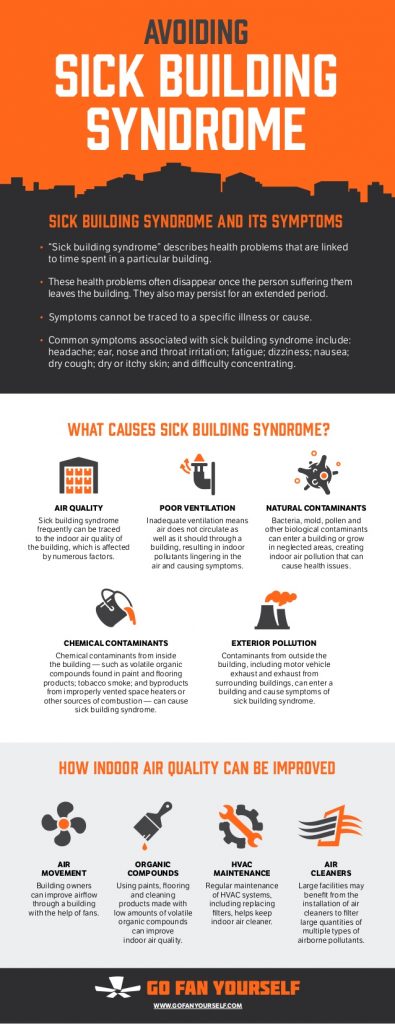Sick Building Syndrome: Is Your Workplace Healthy?
“Sick Building Syndrome” is a term that has been around for a few decades to explain how and why people are affected by their buildings. As a building biologist, I am frequently assessing the health of buildings (whether they are sick or not) and how they may impact upon the health of the occupants – be that at home or at work.
Guest author Jennifer Bennett discusses sick building syndrome in relation to the workplace.
Sick Building Syndrome: Is Your Workplace Healthy?
Does it sometimes seem like everyone in your office is coming down with something?
Are you and your colleagues constantly coughing and sniffling, or complaining of headaches, dizziness and nausea?
Or perhaps you’re just really tired all the time?
And yet, when 5 o’clock rolls around and you’re on your way home, you start to feel a lot better.
You might be thinking that you just hate being at work!
Could it be more..?
However, there may be something other than burnout or a bad bout of the flu to blame.
If you’re experiencing odd symptoms that disappear when you go home, your building may well have a case of Sick Building Syndrome.
This is a somewhat mysterious condition that causes general feelings of ill health in occupants of a building, including headaches, aches and pains, skin irritation, fatigue and shortness of breath.
The precise causes of Sick Building Syndrome haven’t been identified, but the general consensus is that it’s a symptom of environmental problems within a building.
People first started reporting Sick Building Syndrome in the 1970s, when economic pressures and oil embargoes forced architects and engineers to design more airtight office buildings to cut energy costs.
As a direct result, indoor air quality drastically worsened, as polluted air became trapped in buildings rather than being recirculated outside.
Chemical pollutants such as VOCs and biological contaminants such as mould then gradually rose in concentration, resulting in the health problems in employees that we now call Sick Building Syndrome.
Poorly designed ventilation systems also resulted in uncomfortable temperatures and high humidity levels, which can further encourage mould growth.
What is the Impact?
A poor working environment doesn’t just have health implications – it can also have a profound economic impact on businesses.
Sick Building Syndrome drastically reduces productivity, with poor indoor air quality estimated to cost employers around $15 billion a year in worker inefficiency and sick leave.
It’s also been noticed that Sick Building Syndrome is most common in open plan offices, and it’s unlikely to be a coincidence that employees in open plan offices also take on average 62% more sick days than those in cellular offices.
It’s clear that something needs to be done.
This infographic…
Paint Inspection have designed this infographic to tell you everything you need to know about this important topic.
Covering everything from the symptoms and causes, to the costs to businesses and some actionable solutions, we’re sure you’ll leave this blog feeling more equipped to deal with your unhealthy office building!

About the Author
Jennifer Bennett is the Content Writer at Paint Inspection, a UK-based coating inspection and surveying company.


